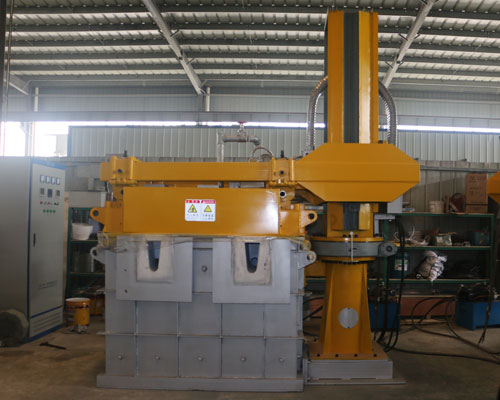In aerospace industry, the requirements of casting aluminum alloy castings are very high. Most companies still use inert gas rotary degassing and slag removal operations to purify molten aluminum.
For the molten aluminum with higher requirements, it can meet the product requirements after being treated with hexachloroethane.
Due to low casting requirements, backward equipment and technology, small aluminum alloy die-casting enterprises basically adopt machine side furnace smelting and do some simple slagging treatment to produce castings.
It is better to use inert gas or non-toxic refining agent to carry out some simple refining treatment or filter aluminum liquid with ceramic foam filter plate, and it can be put into production without testing the effect of aluminum liquid.
The quality of liquid aluminum produced by this method is poor, the production level is low and the cost is high.
Some large and medium-sized aluminum alloy die-casting enterprises mostly adopt the methods of centralized smelting, slag discharging in furnace, sub contracting degassing and slag discharging treatment, and then transfer to the furnace to organize production.
For some castings with high requirements, such enterprises usually use continuous melting furnace as machine side furnace.
The molten aluminum is deaerating online with inert gas and filtered with ceramic foam to produce castings.
Degassing equipment rotates an injector immersed in the melt so that the purge gas (usually inert gas) is distributed in the melt in the form of small bubbles to purify the aluminum melt and Degas hydrogen.
The less and more frequent the bubbles are removed, the better the melt can be degassed and there is no oxide impurity.
Degassing equipment can not only be used to purify molten aluminum in degassing process, but also can remove residual oxide on the surface through baffle (knife) during correct operation.
Rotary degassing is usually used in combination with an inert gas, such as nitrogen, suitable for the affected melt.
In some cases, inert purge gases will also be mixed with low concentrations (< 2.5%) of sulfur hexafluoride or chlorine.
In aluminum melt, the hydrogen content is greatly reduced compared with other purge gas methods due to the fine distribution of rotor purge gas.
With this principle, almost any bath surface can be cleaned, a very wide bubble distribution is achieved in the whole treatment container, and the treatment time can be shortened by effective degassing and melt purification.

